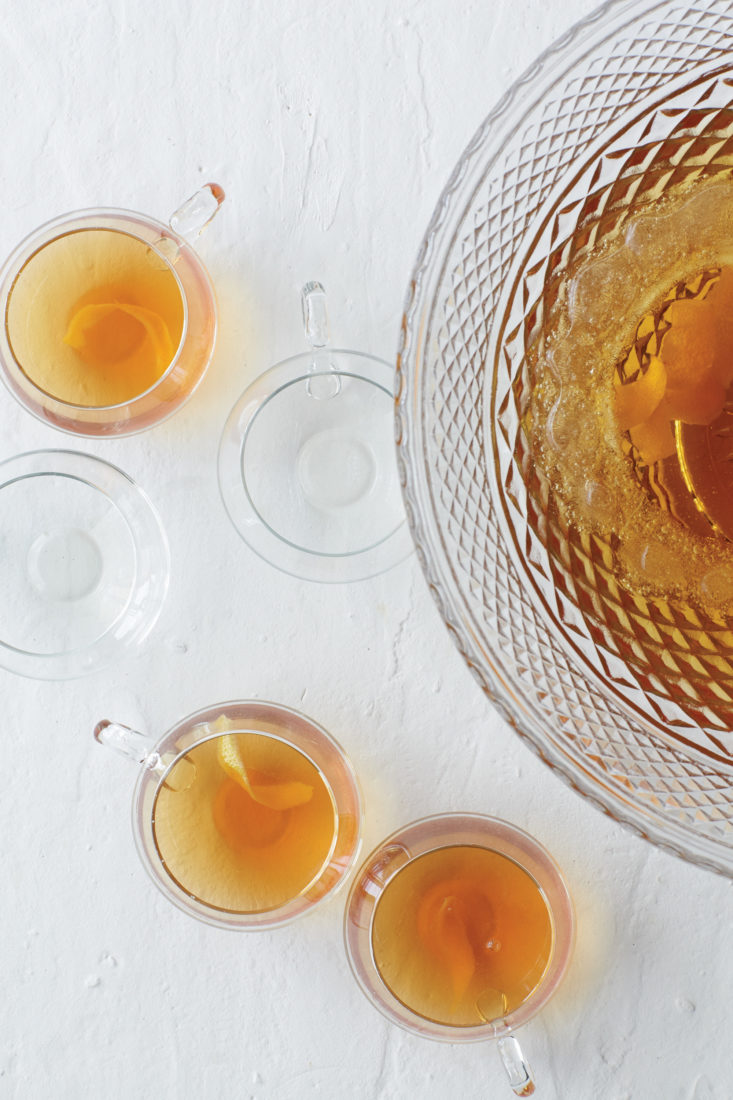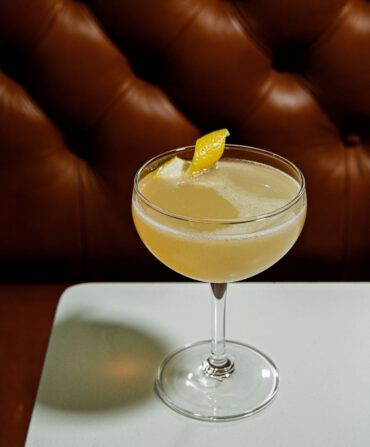Anyone with a fondness for intricately flavored, carefully measured cocktails and entertaining at home knows how poorly the two mix. Here’s how Jerry Slater, the owner of Atlanta’s H. Harper Station restaurant, describes it: “Making cocktails for twenty people at home is a nightmare. By the time you’re done mixing, someone’s already finishing, and then you’ve got to start all over again.” The solution, of course, is to make one giant cocktail beforehand, thereby acquitting oneself of all that citrus squeezing and shaker shaking. There’s even a name for that solution: punch.
And yet: punch. Sigh. More often than not, punches underwhelm—too fizzy, too fruity, too sherbet-y, and/or too baroque, the flavors all muddled into the boozy equivalent of the water left over from cleaning watercolor brushes. Or they overwhelm, with ethanol levels more suited to tractor fuel. (This variety is usually the work of men whose training in punch making began and ended in a fraternity house basement, where flammability indicated quality.) Women avoid the latter, and men scrounge around for a beer to avoid the former. The hunk of ice languishing in the punch bowl can evoke a doomed glacier in a climate-change documentary.
Tagging behind the cocktail revival, however, has been a punch revival, spearheaded by the cocktail historian David Wondrich (see his encyclopedic 2010 book, Punch, for the whole shebang) and popularized by bartenders like Slater, whose bar menu features a revolving cast of oldfangled and newfangled punches. “Punch bowls are the original cocktails,” Slater says. This is true: The bowl preceded the glass by more than a century. Peruse some old punch recipes—and by old, I mean antebellum old—and a truth emerges: Punches don’t have to suck. Or involve 7Up.
Consider the Cadet Punch. This is a Slater invention, but its inspiration stretches back to nineteenth-century Savannah, Georgia, where a militia group called the Chatham Artillery concocted a punch that could reasonably be called weaponized. Into a horse bucket went brandy, rum, whiskey, and champagne, along with an oily lemon and sugar mixture. Slater ditched the brandy, rum, bubbles, and horse bucket to produce a simpler, less belligerent blend. The result, he says, tastes something like an old-fashioned—a minimalist punch for whiskey lovers. “It doesn’t hide anything,” Slater says.
One of the secrets here is a sweetener called oleosaccharum, which admittedly sounds like something you’d find at the Hogwarts Alumni bar. But it’s merely sugar that’s been locked up with lemon peels for a while, so that the lemon oil breaks down the sugar into a rich, subtle goop—a trick dating back to the late seventeenth century. “You get the essential oils without adding the juice,” Slater explains. “That gets you a complex citrus flavor without the tartness and boringness of it.” Another crucial element: water. Water gets a bad rap among hardcore whiskey drinkers, with the more macho among them considering it liquid estrogen. But punches aren’t quite cocktails, and certainly aren’t shots. Dilution—in this case, a one-to-one ratio of water to rye—yields the right balance of flavors, in addition to keeping your guests’ clothes on their bodies. And lastly, there’s ice. Cubes melt too fast, killing that balance. A Bundt pan filled with water and placed in the freezer will give you a big ice doughnut to float in the punch bowl; a quart-size plastic container, similarly filled and frozen, suffices as well.
“I love the convivial aspect of a punch bowl,” Slater says. That goes for his bar, where a punch bowl on a table brings patrons together in a different, more communal way than cocktails do, and for parties at home, where, he says, a punch bowl allows a host to “just ladle and conversate.”








